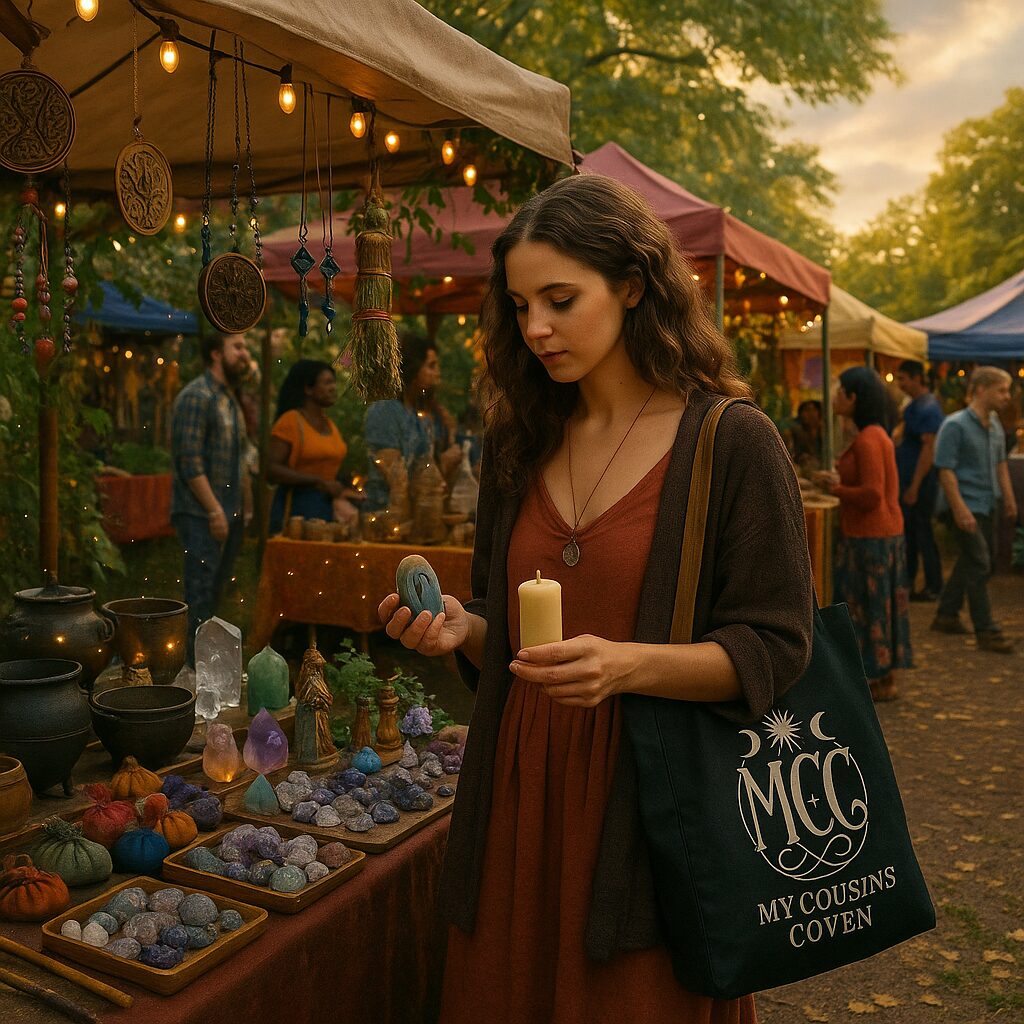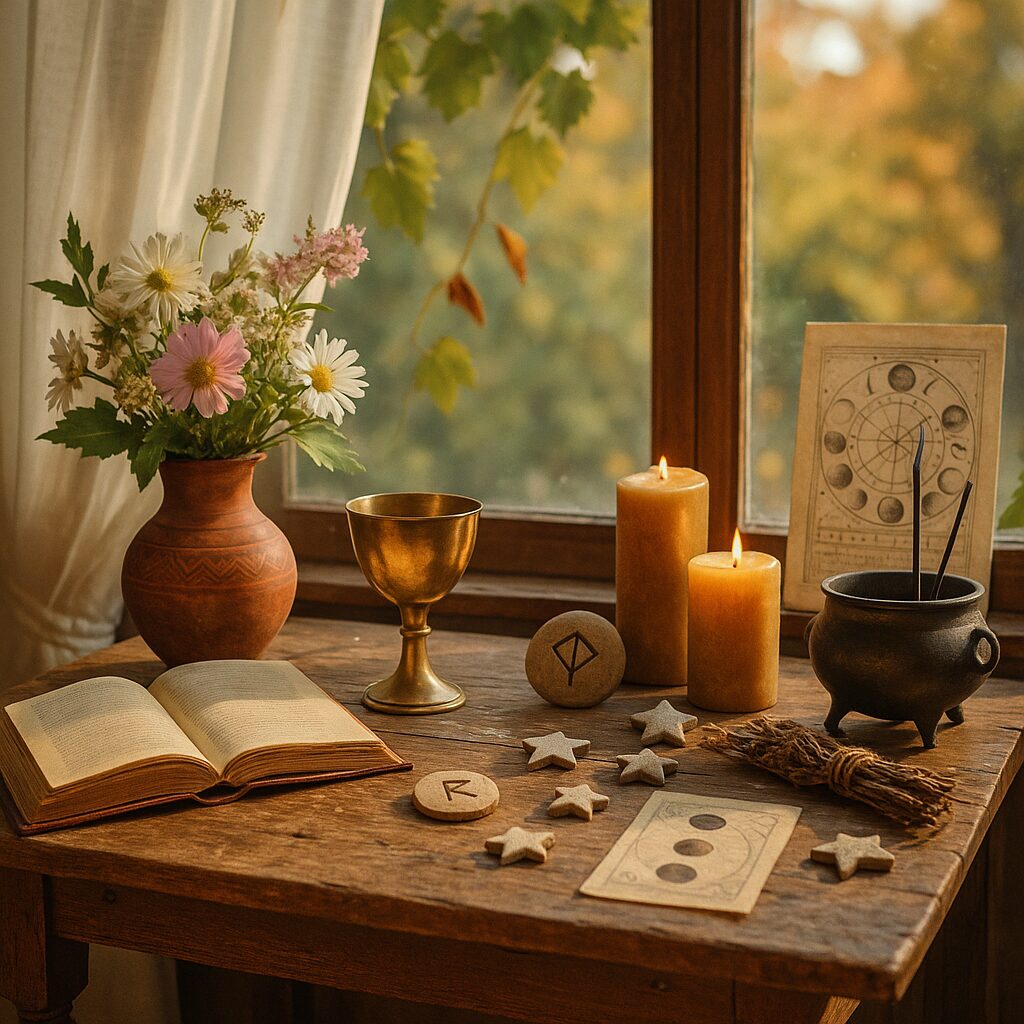Experimental approaches to magic

Eclectic Witchcraft
If folk magic is the memory of the land, and Wicca is the temple built upon measured ritual, then Eclectic Witchcraft is the open marketplace — where practices, symbols, and tools from many paths meet, mingle, and transform. Here, a witch shapes their own way by weaving together what works, what resonates, and what calls from beyond the familiar. It is a path of choice, of combination, and of deliberate experimentation, where tradition is honored but never allowed to become a cage.
Eclectic witches draw from a wide palette: the lunar cycles of Wicca, the herb lore of village craft, the sigil-making of Chaos Magic, the protective talismans of folk traditions, or the ceremonial structure of high magic. A single altar might hold a crystal grid beside a saint’s candle, a rune stone resting next to a tarot deck, or a bowl of salt flanked by a wand of driftwood. Here, intuition becomes as important as instruction; the witch learns not only what to use, but why it works for them.

Chaos Magic
A frequent companion to eclectic practice, Chaos Magic thrives on the principle that belief itself is a magical tool—one that may be adopted, discarded, or reshaped as needed. Its practitioners work through sigils, pop-culture archetypes, planetary alignments, or even fictional deities, channeling the raw energy of imagination to embody intent. Yet such workings often draw deeply upon the practitioner’s personal power, and without grounding or recovery, this form of magic can be highly draining.
At Coven of the Veiled Moon, we value the inventiveness and creative freedom that Chaos Magic embodies, but we also recognize that tried-and-tested methods tend to yield steadier results. The very openness that makes Chaos work potent also makes it prone to misfire or misdirection, as belief and will can fragment under too many shifting paradigms. When experimentation does succeed, however, it enriches the wider Craft—each verified insight adding to the collective knowledge that unites and strengthens all paths.

Tools of the Eclectic Witch
Because eclecticism is adaptive, the toolbox is both practical and deeply personal. An altar might change with the seasons or the project at hand. A leather-bound grimoire could sit beside a digital note file of lunar charts; incense for one working might be replaced by fresh flowers in the next. Divination can range from the precision of astrology to reading the patterns of tea leaves. Protective wards might be drawn from runic symbols one week, from knot magic the next. The guiding principle is utility in alignment with intent.

In Contrast to Other Traditions
Where initiatory Wicca builds upon lineage, and Mystical & Ecstatic paths cultivate direct communion through trance, Eclectic Witchcraft is unapologetically open-source. Its practitioners may borrow the circle casting of Wicca one day and the hedge-crossing of folk craft the next, shaping them to fit the work at hand. This is not carelessness, but a deliberate openness — a recognition that magical effectiveness can arise from synthesis. The difference is less about skill and more about philosophy: the eclectic witch measures truth in results, resonance, and relationship rather than in adherence to a fixed form.

Without a single shared code like the Wiccan Rede, eclectic witches must define their own ethical compass. For some, this means drawing from multiple traditions to shape a balanced set of principles; for others, it means trusting an evolving relationship with spirit allies, ancestors, or the land itself. Some do follow their own form of the Rede. This freedom demands accountability — to the self, to the spirits invoked, and to the communities touched by the work.
Eclectic Witchcraft is neither a refuge from tradition nor a rebellion against it. It is a living conversation with magic as it presents itself in the moment. The path is rarely straight, often doubling back as the witch discovers new tools, discards the ones that no longer serve, and adapts again. For those called to it, this freedom is its own sacred current—one that invites exploration without promising final answers. The work is as much about shaping the witch as shaping the spell, and each turn of the path offers another chance to see the world, and the craft, anew.
Yet freedom without grounding can easily lose its center. Eclectic practice, while deeply individual and creative (and creation itself is magic), can sometimes lack depth when built as a patchwork of disconnected methods. Gathering from many sources is powerful, but weaving them with understanding—knowing how symbols, elements, and philosophies interact—creates coherence rather than confusion. Done with intention and study, the eclectic path becomes not a hodgepodge but a living synthesis, a post-modern art of correspondences where diverse traditions speak to one another. In the hands of a thoughtful practitioner, it can be one of the richest and most dynamic expressions of modern witchcraft.

